This is the ultimate guide to Dashi, Japanese soup stock. You’ll learn about the different types of dashi, the ingredients, and how each stock is used in Japanese cooking.
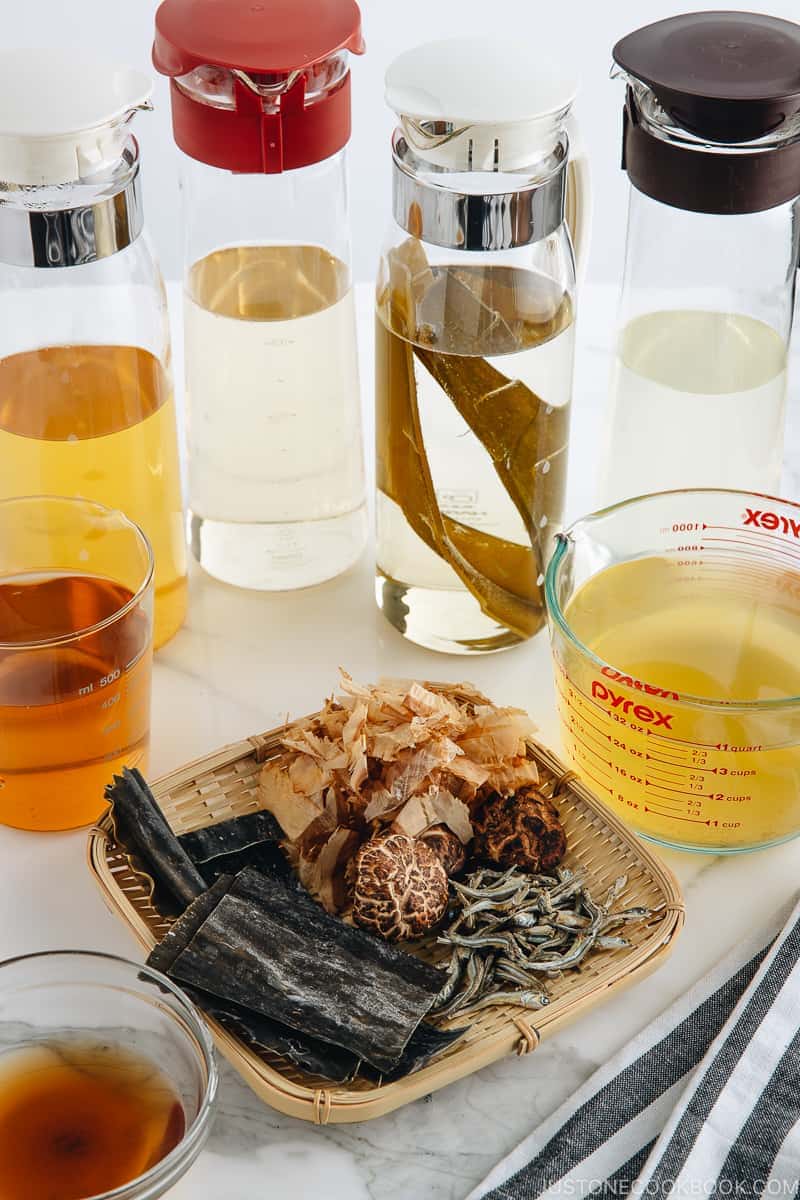
Table of Contents
What is Dashi?
Dashi (だし, 出汁) or Dashijiru (出し汁) is Japanese soup stock that is the backbone of many Japanese dishes. It is all-important and indispensable, and you can trace its existence in Japanese daily cooking back to the Edo period (17th Century).
Unlike soup stocks from other cuisines, which are typically made by boiling an assortment of meat, vegetables, herbs, and spices for several hours, dashi usually contains only one or two ingredients, and preparation takes just 20 minutes. Yet, dashi gives Japanese food its unique, rich, umami-packed savory flavor.
The Japanese soup stock is often made from:
- Kombu (dried kelp)*
- Katsuobushi (dried bonito flakes)
- Iriko or niboshi (dried anchovies/sardines)
- Shiitake (dried shiitake mushrooms)*
- OR a combination of all above or two (such as kombu + katsuobushi)
*vegetarian and vegan
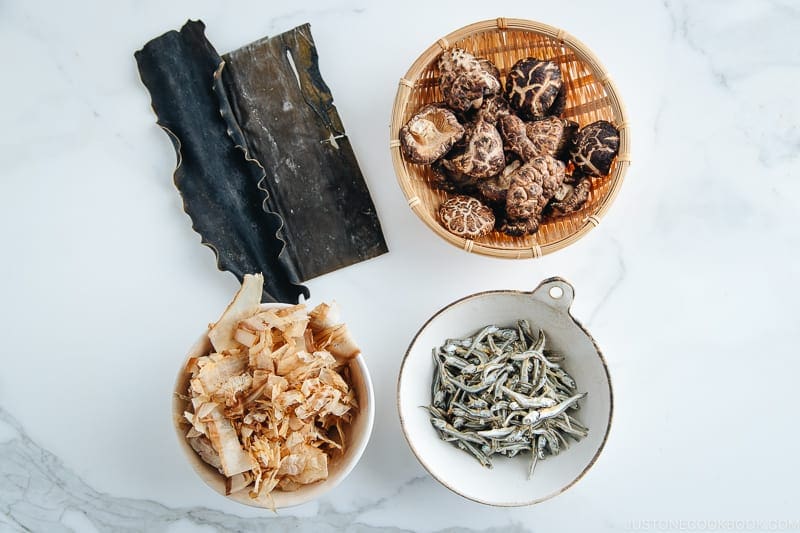
How Does Dashi Taste Like?
All the dried ingredients that are used to make Japanese soup stock are rich in naturally occurring glutamates and provide intense flavor to the stock. Dashi creates a savory umami flavor from all these ingredients and you don’t need to season the food as much once you have a good stock.
With a distinctive sweet and savory note, the deep umami flavor is what set dashi apart from other stocks.
How Do You Use Dashi in Cooking?
The most common use for Japanese soup stock is in a bowl of delicious miso soup, the soup for the soul for the Japanese. If you wish to make a bowl of authentic Japanese miso soup, I strongly encourage you to use dashi instead of substituting it with other broths such as vegetable or chicken broth. You will notice the difference right away!
Dashi is also being used as a broth base in Japanese hot pots (e.g., Shabu Shabu), stews (e.g., Oden), simmered dishes (e.g., Nikujaga), and noodle soup dishes (e.g., udon, soba, and ramen).
You can also use it as a seasoning liquid (e.g, Tamagoyaki, Takikomi Gohan, and Takoyaki) or add it to sauces to bring out the savory depth of the dishes. Since it is a clear umami-rich broth with a subtle aroma, dashi is really versatile and you can literally use it in any dish that call for a touch of liquid.
6 Different Types of Dashi
A lot of people think dashi is made of fish, so vegetarians and vegans can’t use it. No, that’s not true.
There are 5 different types of dashi and I’ll introduce them here. How do we decide which stock to use for a particular dish? Well, there is no rule and it’s up to you. Below, I added some examples of dishes that go well with each type of dashi.
Classic Awase Dashi (Kombu and Katsuo Dashi)
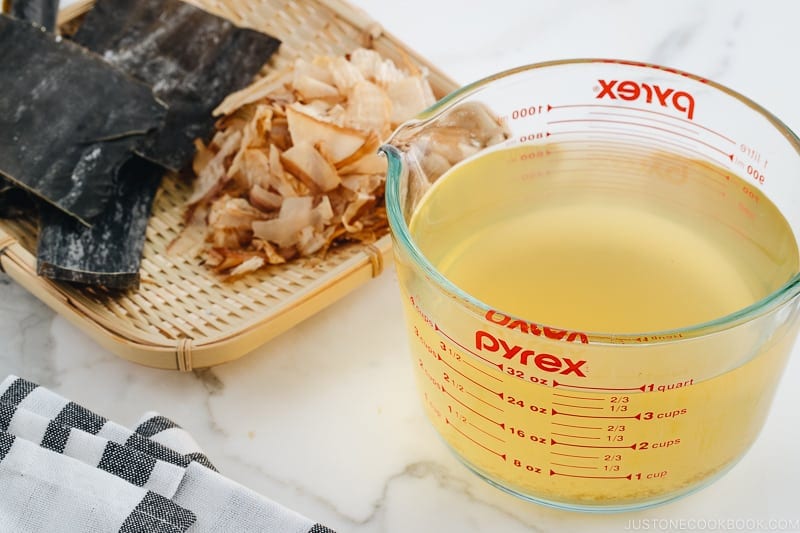
- Awase dashi (合わせだし) is a combination of kombu (dried kelp)and katsuobushi (dried bonito flakes).
- The most common, all-purpose seafood-based stock (and this is my go-to stock).
- Awase means “combination” or “mixed” in Japanese.
- This is my go-to dashi for my recipes.
📝 RECIPE: To make it from scratch, check out How To Make (Awase) Dashi.
This stock is good for:
Kombu Dashi
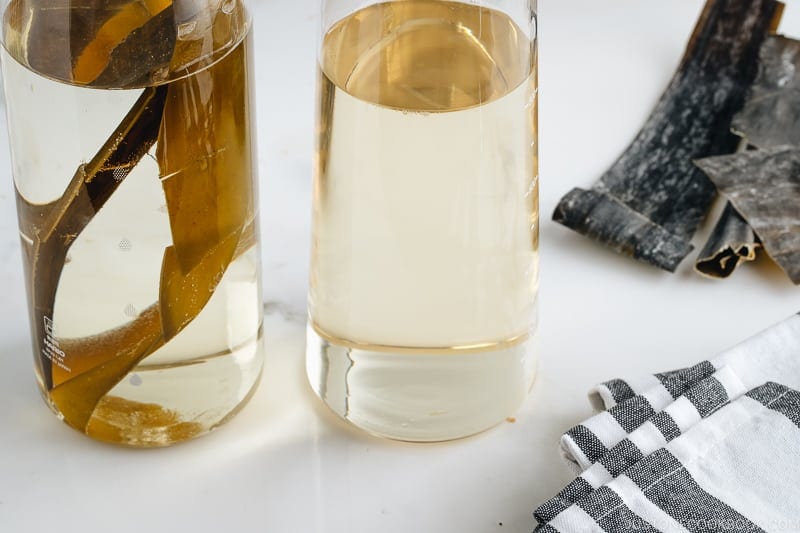
- Kombu dashi (昆布だし) is a vegetarian/vegan stock made from kombu (dried kelp).
- Gentle flavor.
- It’s probably the easiest stock to make.
📝 RECIPE: To make it from scratch, check out How To Make Kombu Dashi.
This stock is good for:
- Yudofu
- Clam Soup
- Shabu Shabu
- Vegetable Ohitashi
- Use when the flavor of other ingredients is subtle and when the main ingredient is fish or seafood.
Katsuo Dashi
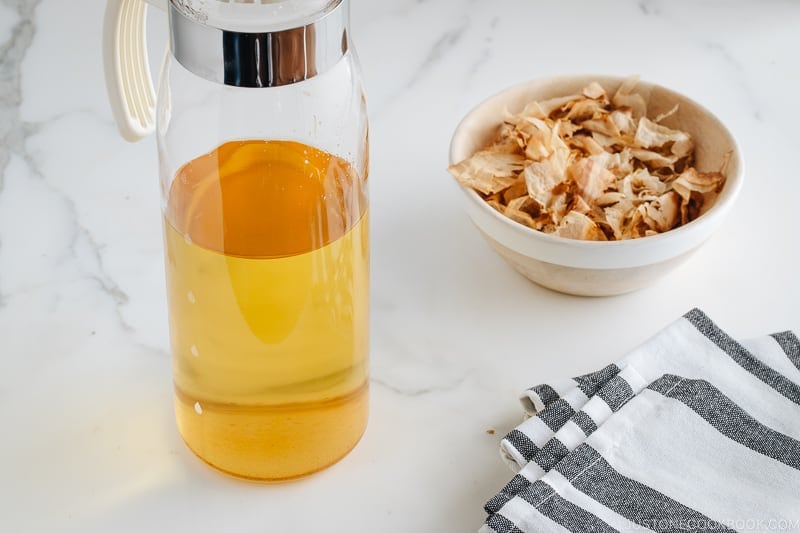
- Katsuo dashi (鰹だし) is a seafood-based stock made from katsuobushi (dried and fermented skipjack tuna/bonito that is shaved into thin flakes).
- Aromatic, flavorful, and elegant.
📝 RECIPE: To make it from scratch, check out How To Make Katsuo Dashi.
This stock is good for:
- Clear Soup
- Chawanmushi
- Vegetable Ohitashi
- Noodle soup dishes (e.g., Okinawa Soba)
- Simmered dishes
- Great for vegetables, but not recommended for fish dishes
Iriko Dashi (Niboshi Dashi)
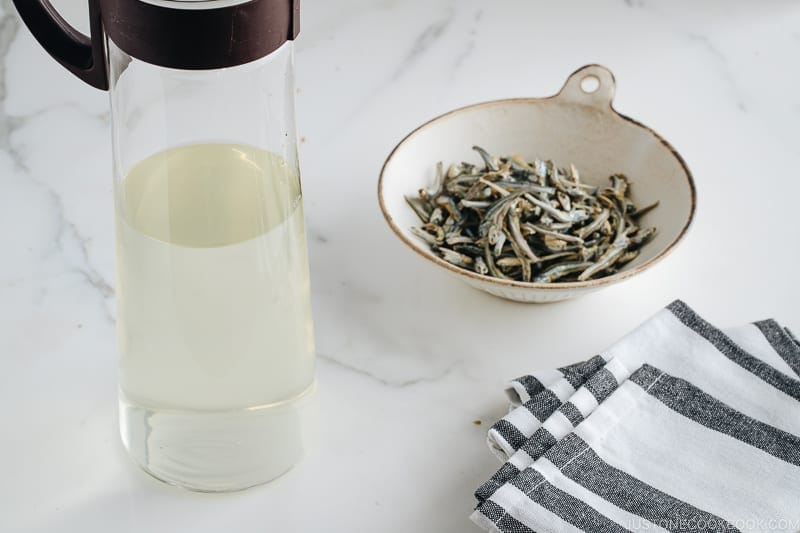
- Iriko (Niboshi) dashi (いりこだし・煮干しだし) is a seafood-based stock made from iriko / niboshi (dried baby anchovies/sardines).
- Strong fishy aroma and taste.
- Most affordable compared to kombu and katsuobushi.
📝 RECIPE: To make it from scratch, check out How To Make Iriko Dashi.
This stock is good for:
- Miso Soup (most commonly used)
- Noodle soup dishes (Curry Udon, Kitsune Udon, etc) and Mentsuyu
- Donburi (rice bowl) dishes
- Simmered dishes (Simmered Kabocha)
- Use it when you want a nice savory stock to go with other strong distinct flavors or seasoning like soy sauce, but don’t use it to cook fish because the overall result could come out too strong.
Shiitake Dashi
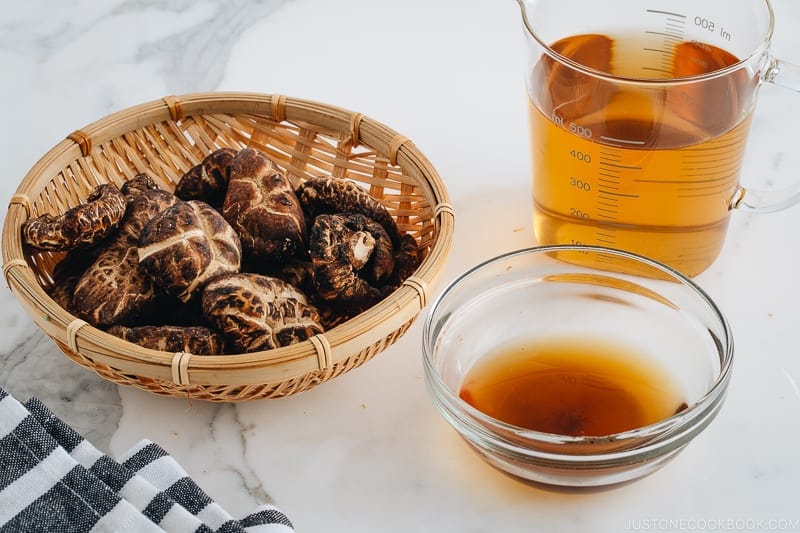
- Shiitake dashi (干し椎茸の戻し汁・椎茸だし) is a vegetarian/vegan stock made from rehydrating dried shiitake mushrooms.
- Rehydrated shiitake is used for cooking.
- The soaking liquid (Shiitake Dashi) is rarely used as its own and is usually combined with Kombu Dashi or Katsuo Dashi to enhance the flavor.
📝 RECIPE: To make it from scratch, check out How To Make Shiitake Dashi.
This stock is good for:
- Takikomi Gohan
- Chawanmushi
- Noodle soup dishes (Nabeyaki Udon, etc)
- Simmered dishes (Chikuzenni)
- Stir-fried dishes
- Chinese-style dishes (Harumaki)
- Steamed Fish
Vegan Dashi (Shiitake Kombu Dashi)
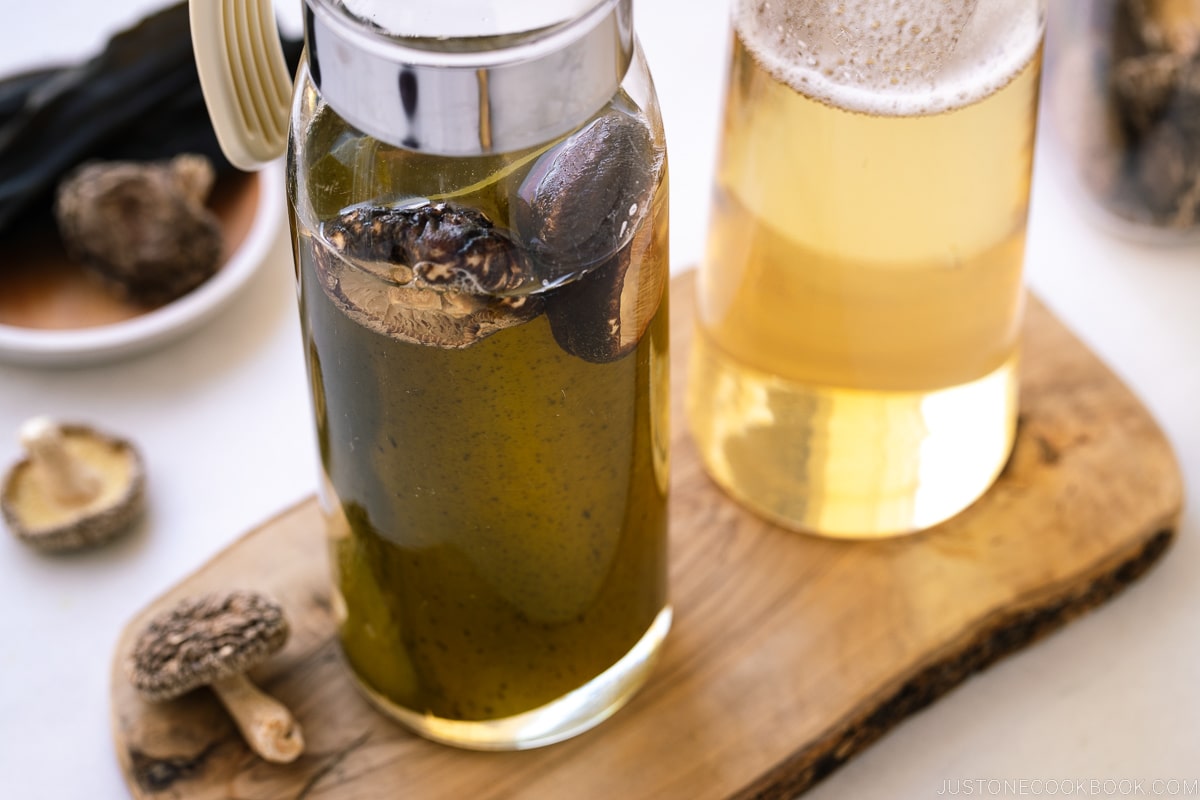
- Vegan dashi (精進だし) is a vegetarian/vegan stock made from rehydrating dried shiitake mushrooms and kombu (dried kelp).
- Rehydrated shiitake is used for cooking.
- It is more flavorful than Kombu Dashi.
📝 RECIPE: To make it from scratch, check out How To Make Vegan Dashi.
This stock is good for:
- Vegetarians and vegans who would like to make Japanese recipes that require dashi.
3 Ways to Make Dashi
Depending on your time and need, you can decide how to make Japanese soup stock using three ways. I’ll start from the most time-consuming method (but only 20 minutes!) to the instant method.
- Method 1: Make Dashi from Scratch (20 minutes)
- Method 2: Dashi Packet (5 minutes)
- Method 3: Dashi Powder (5 minutes)
Method 1: Make Dashi from Scratch
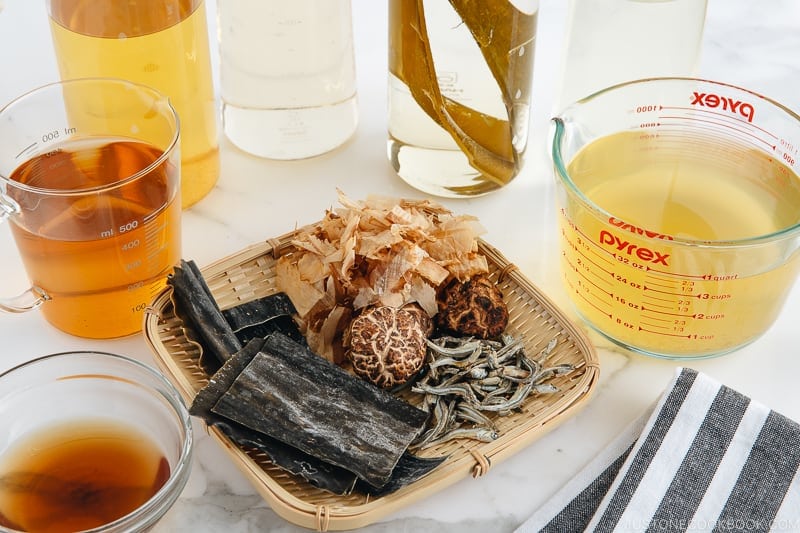
Once you decide what ingredient(s) you want to use for your dashi, please click the link to get the recipe.
- Kombu (dried kelp) + katsuobushi (dried bonito flakes) → Awase Dashi
- Kombu → Kombu Dashi
- Katsuobushi → Katsuo Dashi
- Iriko or niboshi (dried anchovies/sardines) → Iriko Dashi
- Dried shiitake mushrooms → Shiitake Dashi
- Dried shiitake mushrooms + kombu → Vegan Dashi
If you are not sure, go with Awase Dashi. If you’re vegetarian/vegan, go with Vegan Dashi.
Method 2: Dashi Packet (Shortcut)
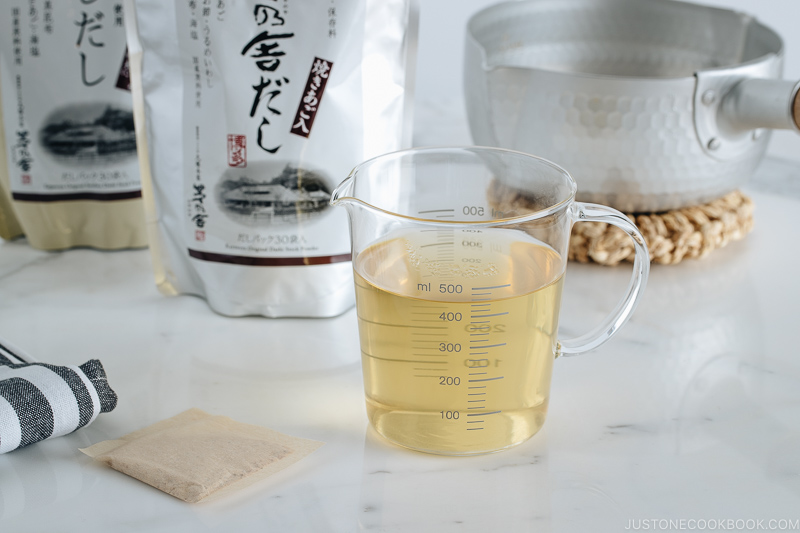
This is the most convenient method which produces pretty flavorful soup stock. One drawback is that these dashi packets might be hard to find in Asian grocery stores. Your local Japanese grocery stores should carry one or several brands.
The Dashi packet above is Japan’s most popular Kayanoya Dashi Packet (MSG-free & additive-free; a bit pricy; Amazon). You may also find Yamaki Dashi Packet in Japanese grocery stores or on Amazon.
📝 RECIPE: To make dashi using a dashi packet, check out Dashi Packet & Recipe.
Method 3: Dashi Powder (Shortcut)
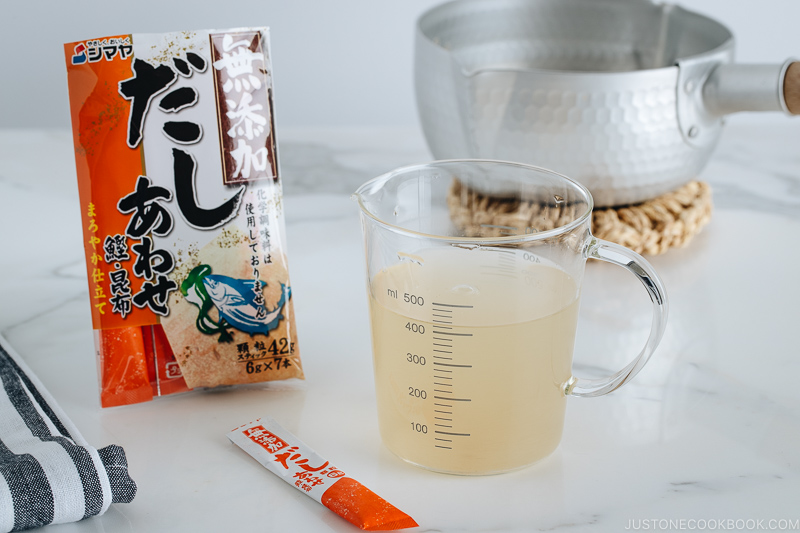
If you want to make a bowl of miso soup, instant dashi powder can be very convenient and save a lot of your time. The most commonly known products are Hondashi (ほんだし) and Dashinomoto (だしの素), which you can find in Asian or even American grocery stores.
However, I strongly recommend MSG-free & additive-free Dashi Powder that’s available at Japanese grocery stores or Amazon.
📝 RECIPE: To make dashi using dashi powder, check out Dashi Powder & Recipe.
Watch How to Make Dashi
I hope this ultimate dashi guide was helpful. Did you figure out which Japanese soup stock you want to use for your next meal?
Wish to learn more about Japanese cooking? Sign up for our free newsletter to receive cooking tips & recipe updates! And stay in touch with me on Facebook, Pinterest, YouTube, and Instagram.
Editor’s Note: This post was originally published on January 4, 2011. The images, video, and content have been updated, and the comment form is open in May 2019.
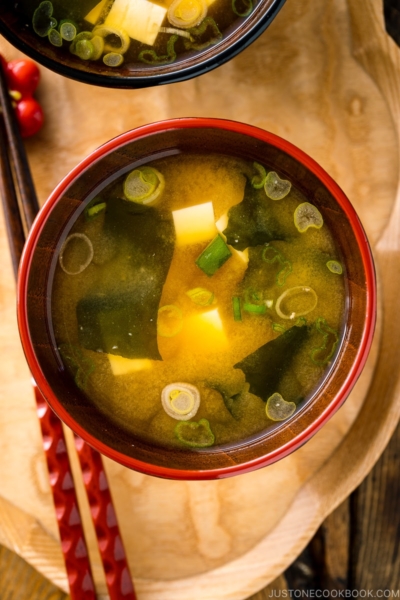
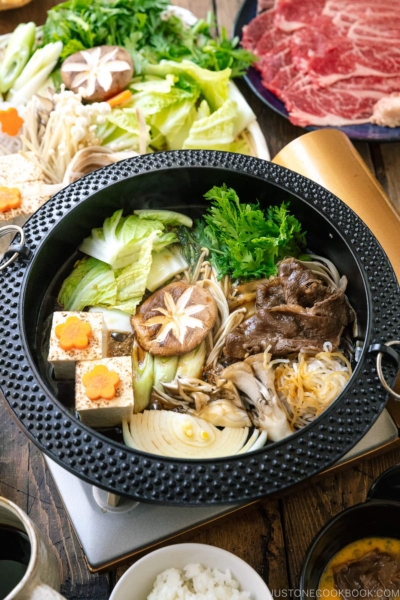
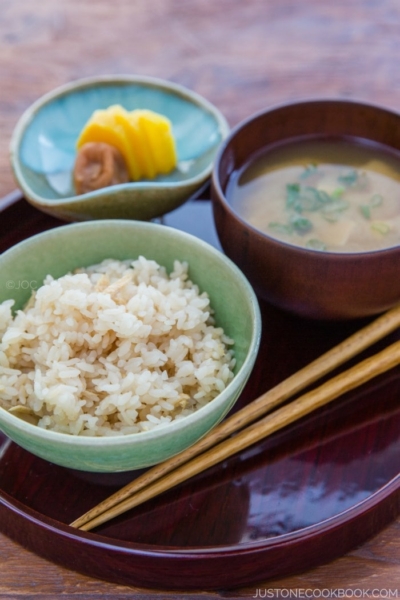
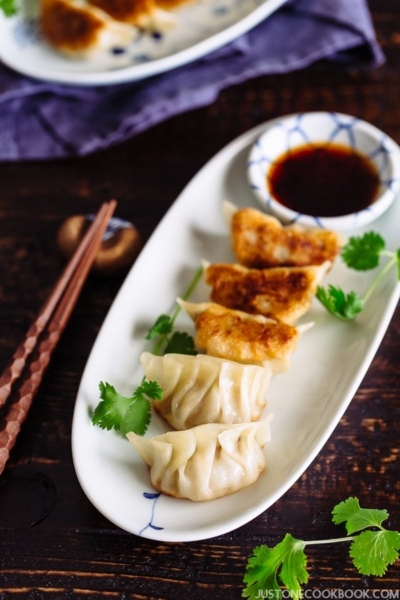
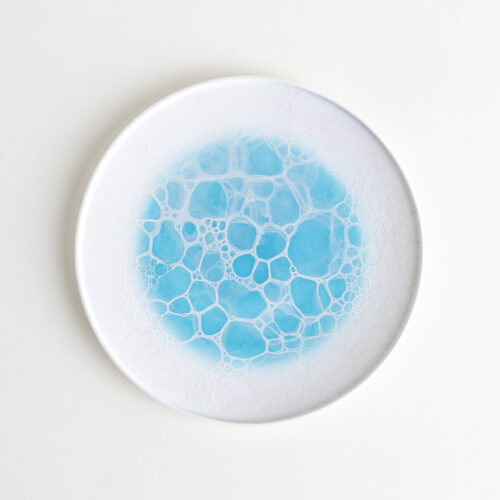
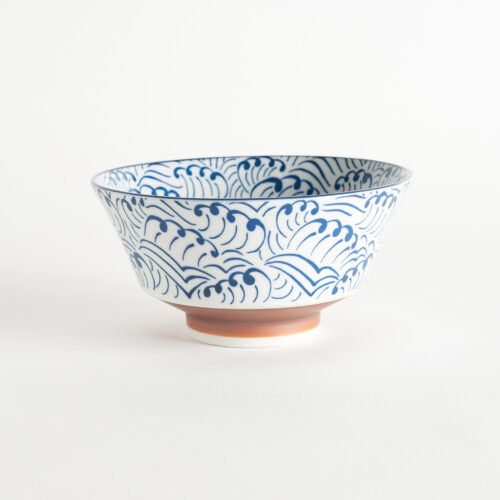
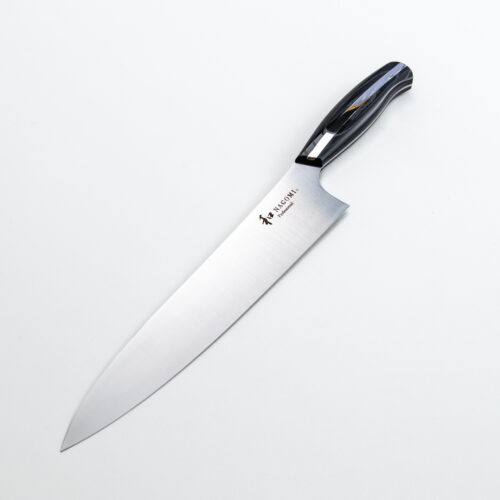
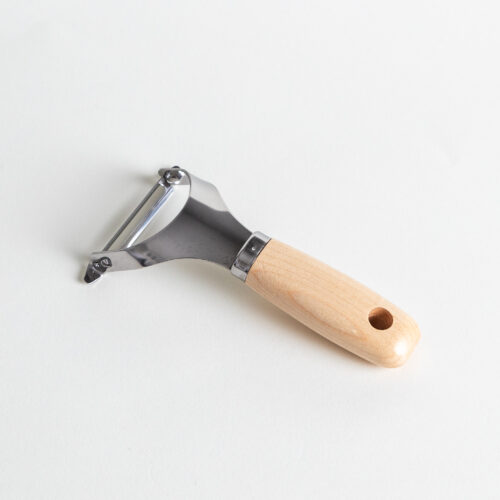
i now make my own miso thanks to you and your videos. i find them to be more healthful than the store-bought ones. thank you for your wonderful inspirational cooking.
Hi Tony! Aww. We are so happy to hear you enjoyed Nami’s homemade Miso recipe as much as we do!
Thank you for trying Nami’s recipe and for your kind feedback. Happy Cooking!
I’ve read a lot about the health benefits from eating homemade dashi/miso soup.
I wonder, would you lose the health benefits if you would be using instant dashi?
The brand I could find is Shimaya Dashi-No-Motto. Is this a good brand?
Love this website!
Hello, Dennis. Thank you for reading Nami’s post.
Shimaya is a common brand in Japan. However, if you’re looking for health advantages, we feel it’s always best to make dashi using natural ingredients.
We hope this helped!🙂
Firstly love the website! I had the privilege to study in Nagoya and feel spoiled by the food so it’s great to have an accessible way to recreate some of those dishes. I would like to ask, what is the mildest (least fishy) version of dashi I could use please? While I know that some/most of the meals I ate there would have had it (ignorance is bliss), as soon as my brain tells me there is seaweed or fish or anything that lived in water in my food I struggle with it, my body rejects anything that remotely tastes fishy :'( (I really tried, big fomo on lots of food worldwide!). What would be the best and most discreet one to use please (e.g. katsudon, meat based ramen and udon are heaven and I would like to recreate at home as close as I can so they still “taste Japanese” rather than western.
Sorry for the ramble!
Many thanks!
S X
Hello Serina! Thank you so much for your kind words. We are so happy to hear you love our website!
You may make dashi using shiitake mushrooms. We hope this will be a good option.😊
https://www.justonecookbook.com/shiitake-dashi/
Hello Naomi,
i read and use your recipes for a long time now and enjoy them very much. Thank you!
I was very intrigued by the concept of a dashi packet.
But no chance of getting any where i life (Germany) even Amazon and eBay failed me. Well, not completely, but i still need money to feed my family.
Looking at the pictures of your dashi packets however, I get the impression it should be possible to assemble some kind of dashi packet myself. Like putting a certain amount of bonito flakes and a bit of kombu into a disposable tea filter bag used for loose tea.
You are the expert, what do you think?
Hello, Anthea! Thank you so much for your kind compliments regarding Nami’s recipes!
We’re thrilled to hear you’ve been enjoying her recipe.🥰
Yes, you can put together the dashi package, however, if you have access to the ingredients, making it without the packet is much easier.
Please see the recipe links in this post to see how simple it is to produce dashi from Katsuobushi (Bonito flakes) or Kombu.
We hope this helps!
Hello
I just found you, I like your website 😁 I have a question… what do you do with the bonito flakes after making the dashi? Do we use them again or do we dispose them?
Hi Jasmin! Thank you so much for reading Nami’s post and trying her recipes.
You can make Furikake with used bonito flakes! We highly recommend it.
Here is how to make it: https://www.justonecookbook.com/homemade-furikake-rice-seasoning/
We hope this helps!
How long can I keep Dashi in the fridge?
Hello, Kristina! Thank you so much for taking the time to read Nami’s post and try her recipe! The length of time varies depending on the type of Dashi. For example, if you make Awase dashi, you can store it in a bottle or mason jar in the fridge for 3-5 days or in the freezer for 2 weeks. For additional information on different types of Dashi, please see the recipe link. We hope this helps!😊
What’s the best way to store unused dashi?
Hi Tom! Thank you for taking the time to read Nami’s post!
You can refrigerate or freeze it in an airtight container.
Please see the bottom of each recipe card for more information.😉
Have fun cooking!
Hi Nami,
First time watching your video, great!
Can you please tell me where to buy the aluminum stock pan with long wooden holder you use in the video ? I love it so much and want to. have one myself 🙂
Thank you in advance.
chai.
Hi Chai! Thank you for watching Nami’s video and trying her recipe!
The saucepan is called Yukihira Saucepan and is one of Nami’s favorite cookware.
https://www.amazon.com/shop/justonecookbook/list/2R2UR0OTHR4WB?ref_=aip_sf_list_spv_ofs_mixed_d
We hope this helps!
Where did you get those tall containers that hold your dashi?!
Hi Lisa! Thank you for asking!
There are from brand name called “Hario”.
Links are here: https://www.amazon.com/shop/justonecookbook/list/JD39FUPH6SRN
Please scroll down, you will see few different types there.
We hope this helps!🙂
Nami!!! Can you please add Amazon links to those cute carafe/containers you’re storing the dashi in???
Hi Jana! Thank you for reading Nam’s post!
Those carafes are from Hario, and Nami listed a few types with Amazon links here. https://www.amazon.com/shop/justonecookbook/list/JD39FUPH6SRN
We hope this helps!
How do you store dashi? 🙂
Hi Jenny! Thank you very much for reading Nami’s post!
If you are making Dashi from scratch, you can store the Dashi in a bottle or mason jar and keep it in the refrigerator for 3-5 days or in the freezer for 2 weeks.
If you use Dashi powder, we don’t recommend storing Dashi in the refrigerator or freezer.
Please check out each Dashi recipe for more detail.
We hope this helps!🙂
It’s difficult to get dashi packs here but they are certainly really convenient. I was wondering about making my own dashi packs using large tea bags.
What do you suggest I can put inside a DIY dashi pack?
Hi Sarah! Thank you very much for reading Nami’s post!
If you can get Dashi ingredients like Dried Bonito, Dried Sardine, Roasted Flying Fish, Dried Kelp (Kombu), you can grind them and packed in the packet.
We hope this helps!